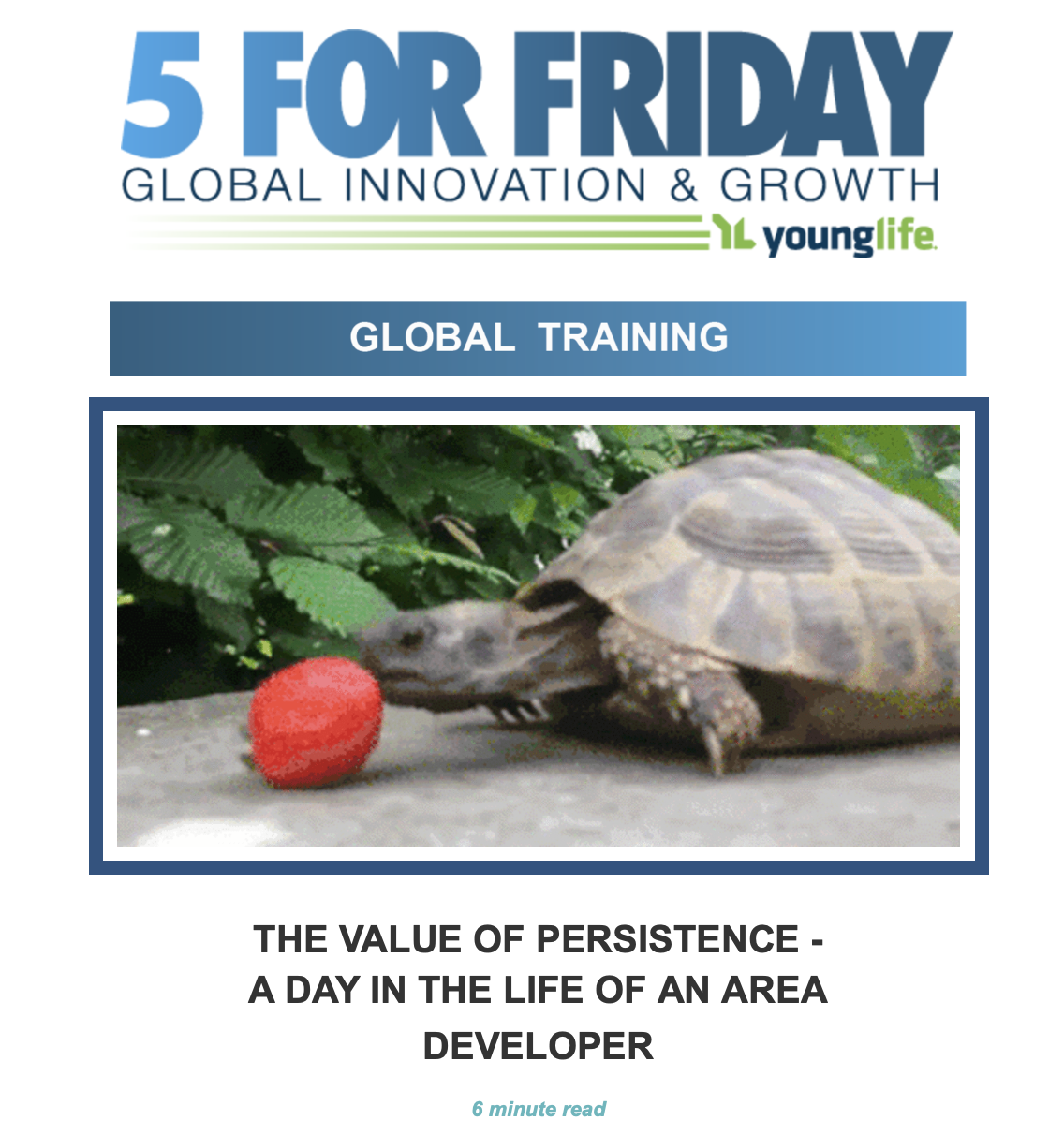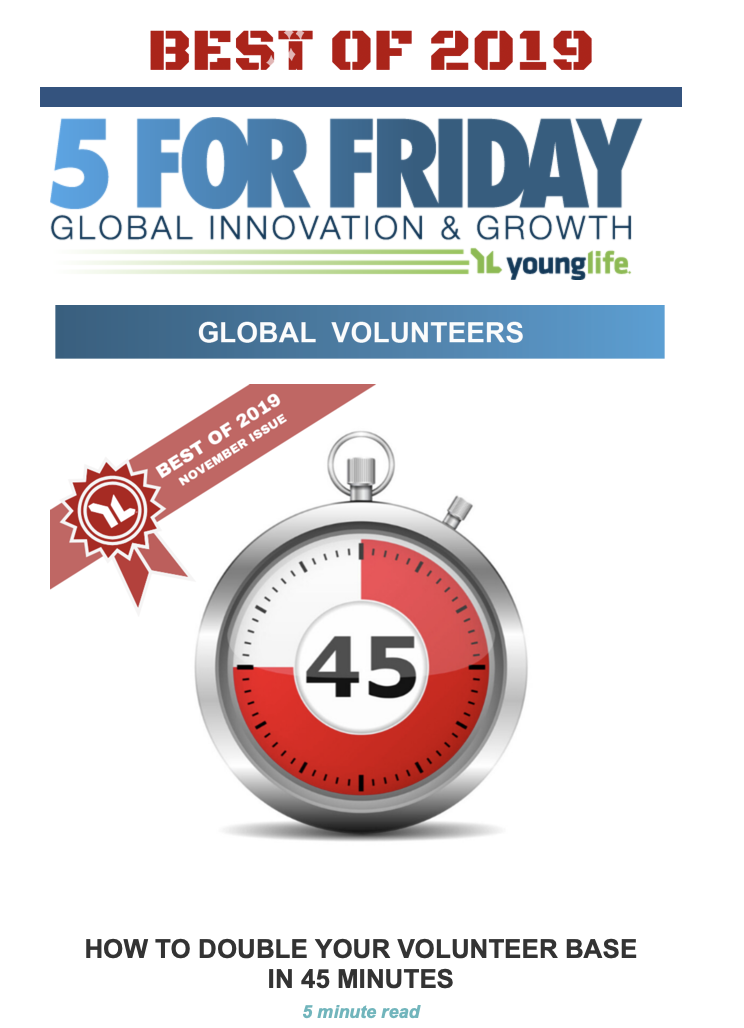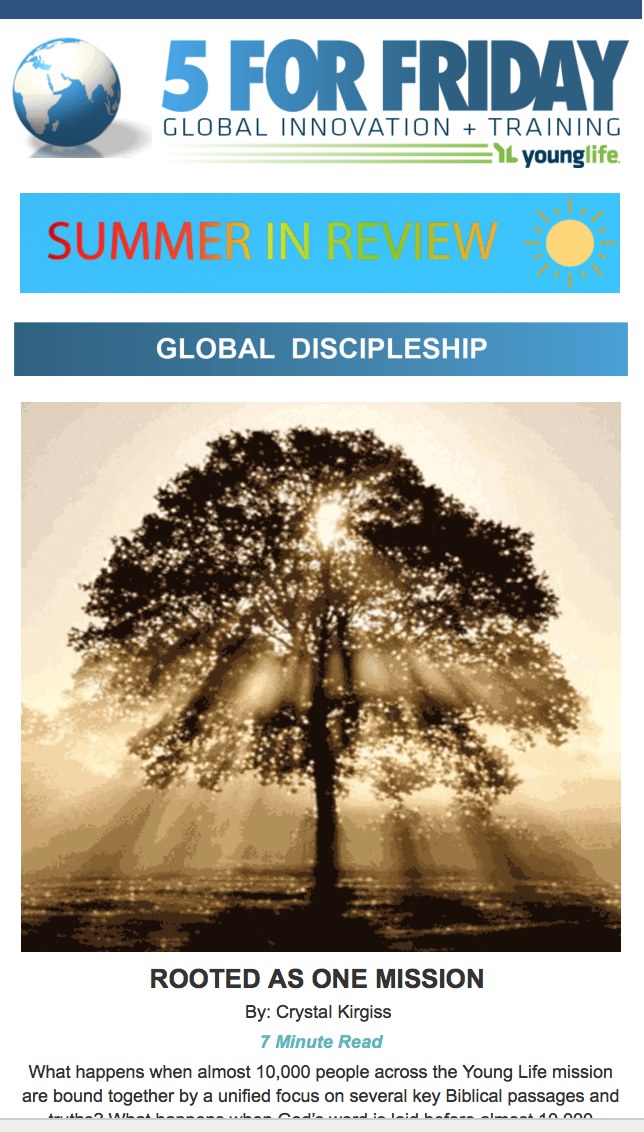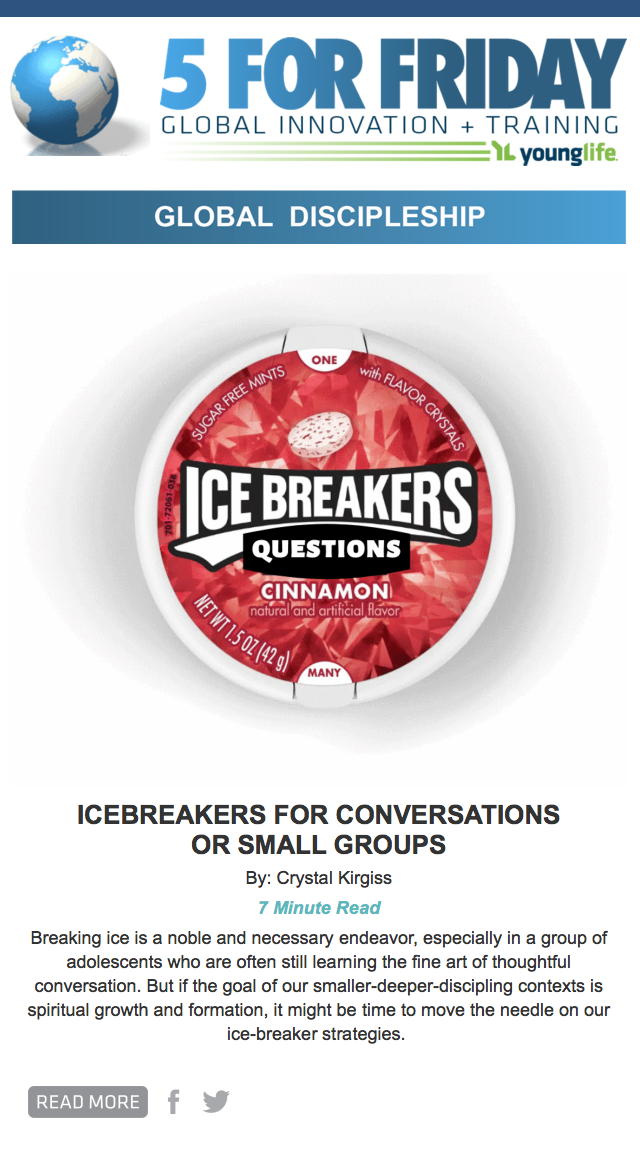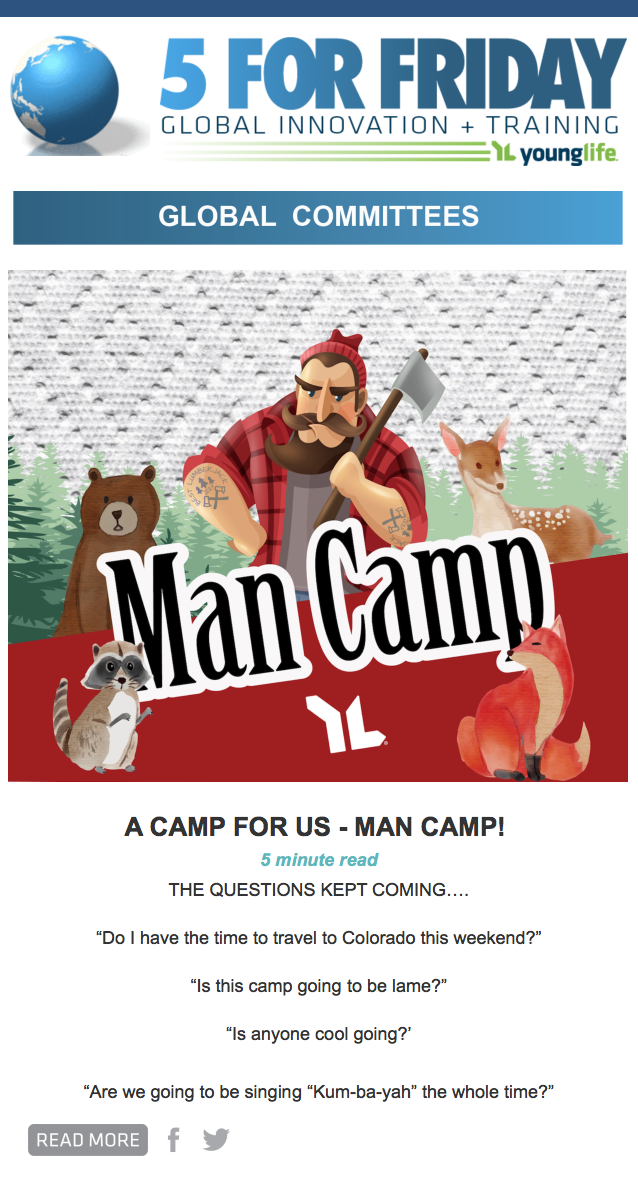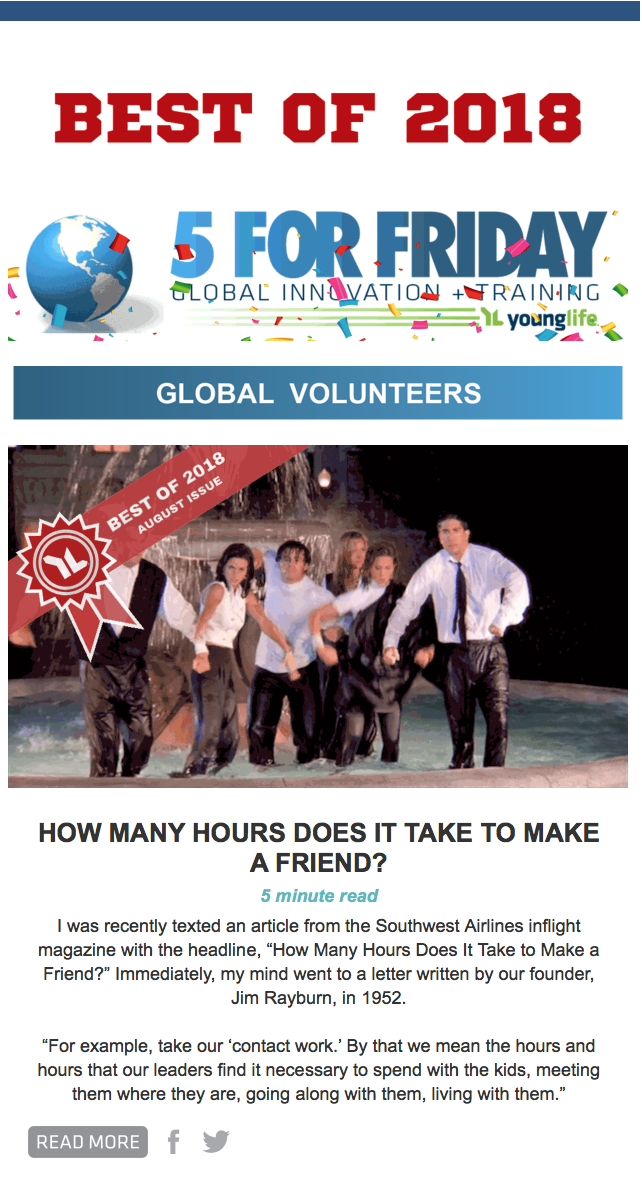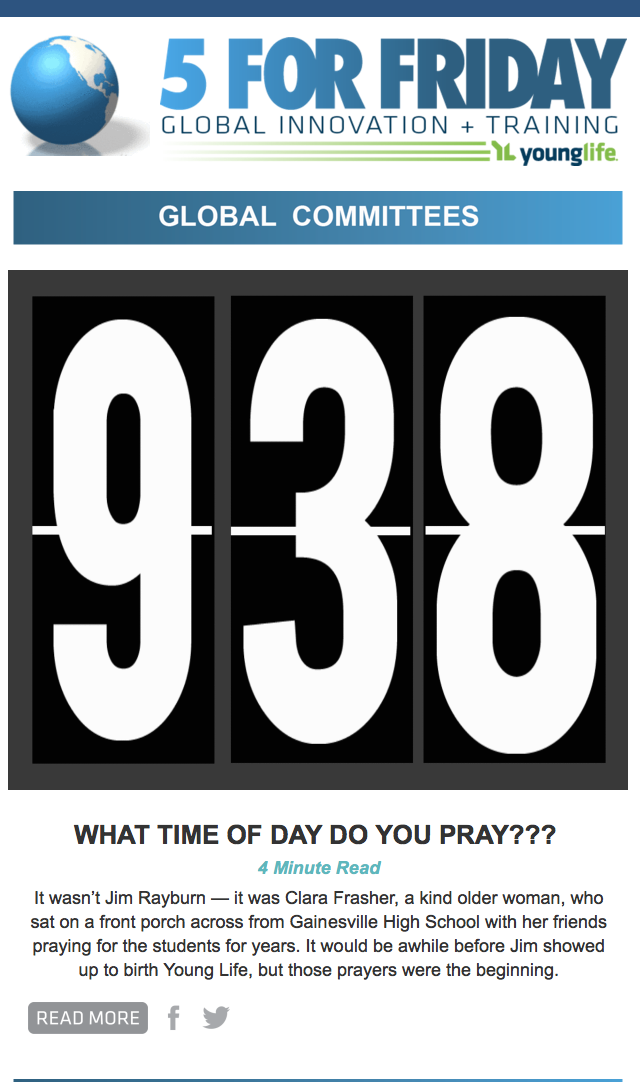Author: Brad Banks, Divisional Training Coordinator, South Central Division
Once when my son was an infant, I changed his diaper and found an undigested black bean. He was nursing at the time so this wasn’t just weird—it was impossible.
It turns out my wife had eaten at Chipotle the day before. As best we could figure, the bean had simply fallen into our son’s mouth while mother and baby fed, then traveled from point A to point B wholly undigested. His tiny body could digest milk just fine, but it couldn’t handle solid food.
The author of Hebrews uses similar imagery. In 5:12, he critiques his readers’ lack of spiritual progress. He wanted them to go deeper, but they weren’t ready. They had reverted back to spiritual infancy and become like babies who “need milk and not solid food.” This critique doesn’t necessarily apply to our Campaigner friends (who often are new believers who actually do need milk), but it does inform our approach to Campaigners and those entrusted to our care.
Regardless of our ministry focus, one of our primary responsibilities is to walk alongside our friends as they discover the Scriptures for themselves, serving not only as their guide but also as their digestive aid. This means we must be spending time in Scripture ourselves, reading and digesting the solid food it contains. Without a doubt, this is THE most important step in preparing for Campaigners.
But all too often we spend irreplaceable hours poking around online instead of peering directly into God’s word. We scour blogs and other resources, ultimately consuming the digested meals of others. You can survive on that, but shouldn’t we aim higher than survival? Consider an alternative.
FIRST digest the text for yourself.
1. In a single sentence, summarize what the passage said THEN.
What did Paul write to the Philippians? What did Jesus tell the Pharisees? Immerse yourself in the words and passage. Then filter the passage through the immediate context, the culture in which the text was written (think in terms of the first-century or ancient Israel*), the covenant that governed God’s people (Old or New), and the person of Christ (how did his life and death influence the inspired words?). This carefully filtered view will frame and guide you through the next step.
2. In a single sentence, summarize what the passage says ALWAYS.
This requires interpretation. Some passages are easy and obvious: “Do not lie.” (Colossians 3:9) Others should bring pause: “You shall not allow a sorceress to live.” (Exodus 22:18)
3. In a single sentence, summarize what the passage says NOW.
Arrive at an imperative that speaks to you today. So for example, Exodus 22:18 might become, “Take sin seriously.”
THEN digest the text with your Campaigner friends.
Repeat the same process above, but invite the observations and experiences of everyone in the group. As you read and discuss God’s word together, use good questions that will unveil what your friends see, uncover how they feel, and unearth what they think.
What you will find is that together, you’ve feasted on what’s true and eternal. That will be far more satisfying than sampling something that’s pre-made or pre-packaged.
______________________________
**If you’re interested in knowing more about the first-century world of Jesus or ancient Israel, check out these resources:
The NIV Application Commentary (Zondervan)
Old Testament Today, 2nd Edition (John H. Walton and Andrew E. Hill, Zondervan)
IVP Bible Background Commentary, NT Edition (Craig S. Keener, IVP)








